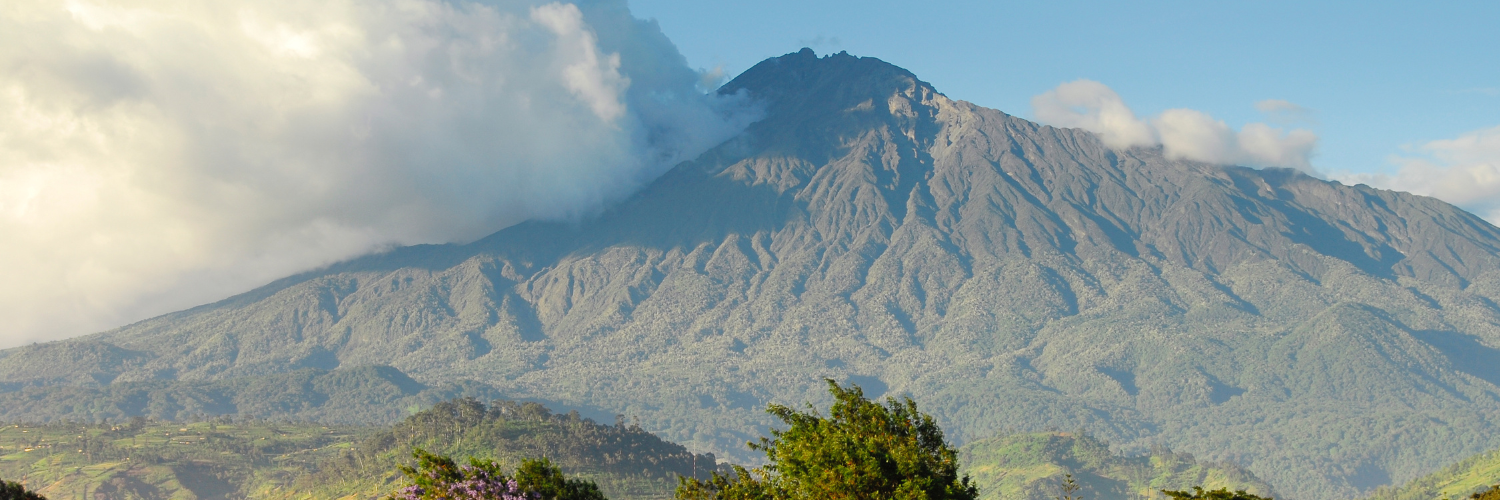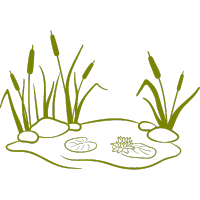Arusha National Park
Home Of
Walking Safaris

Home Of
Walking Safaris

Arusha National Park
Arusha National Park is often overlooked compared the more famous Serengeti and Ngorongoro Crater parks but it is a jewel that shows off a stunning diversity in a relatively tiny space, and is noted for the ease of its safaris which can be completed in half a day from nearby Arusha city.
After entering the main gate of the Park, a darkened forest starts off your wildlife experience with the only black and white colobus monkey colonies to be found on the Northern safari circuit as well as blue colourful turacos and trogons. The Ngurdoto Crater is located right in the middle of the forest and gives rise to small herds of warthog and buffalo in a marshy ground encircled by the crater’s stoney steep cliffs.
As you travel to the Northern boundaries of Arusha National Park, the environment turns to a grass laden hilly landscape around the scenic Momela Lakes which vary in green or blue water colour thanks to a blooming algae population. Huge flocks of Flamingo dominate the Momela Lakes which support some of the best bird watching in Tanzania. Waterfowl who have migrated in the seasons wade along the lake edge with waterbucks showing off their large horns and Giraffes elegantly traversing the grass hills between grazing zebra herds, while scrubby bush land hides pairs of Kirk’s dik-dik.
At either end of the Sun cycle, dusk and dawn the Eastern horizon is clears of cloud giving way to a stunning view of Kilimanjaro’s snow capped peak in the distance.
However, the lesser known but just as majestic Mount Meru, which is the fifth highest mountain in Africa, dominates the park’s horizon. The Eastern foot slopes and peaks of Mount Meru are protected by the Arusha National Park boundaries and give some of the best views of Kilimanjaro.
But, don’t be mistaken, Mount Meru is itself one of Africa’s hiking gems. Its location next to Africa’s most famous mountain means it gets overlooked, making it a lesser travelled trail without the tourist hoards but with just as much challenge and experience as Kilimanjaro.
Forested savannah land begins the ascent of Mount Meru where buffalos and giraffes are frequently spotted. Climbing further up leads into a denser forest dripping with Spanish moss, before reaching open heath land spiked with giant lobelias.
Everlasting flowers cling to the alpine desert, as delicately-hoofed klipspringers mark the hike’s progress. Astride the craggy summit, Kilimanjaro stands unveiled, blushing in the sunrise, and a full awe-inspiring capture of Arusha National Park.
Arusha National Park is often overlooked compared the more famous Serengeti and Ngorongoro Crater parks but it is a jewel that shows off a stunning diversity in a relatively tiny space, and is noted for the ease of its safaris which can be completed in half a day from nearby Arusha city.
However, the lesser known but just as majestic Mount Meru, which is the fifth highest mountain in Africa, dominates the park’s horizon. The Eastern foot slopes and peaks of Mount Meru are protected by the Arusha National Park boundaries and give some of the best views of Kilimanjaro.
But, don’t be mistaken, Mount Meru is itself one of Africa’s hiking gems. Its location next to Africa’s most famous mountain means it gets overlooked, making it a lesser travelled trail without the tourist hoards but with just as much challenge and experience as Kilimanjaro.
Forested savannah land begins the ascent of Mount Meru where buffalos and giraffes are frequently spotted. Climbing further up leads into a denser forest dripping with Spanish moss, before reaching open heath land spiked with giant lobelias.
Everlasting flowers cling to the alpine desert, as delicately-hoofed klipspringers mark the hike’s progress. Astride the craggy summit, Kilimanjaro stands unveiled, blushing in the sunrise, and a full awe-inspiring capture of Arusha National Park.

-
Climb Mount Meru: Best done between June and February dry season, though expect rain rain in November. Best views of Kilimanjaro between December and February.
-
Birdwatching: 400 species within the shadow of Mt Meru. and visit Momela Lakes: scenic, algae coloured lakes dotted with flocks of flamingo.
-
Walking Safari with buffalo, giraffe, and zebra.
-
Ngurdoto Crater: for warthog and buffalo, surrounded by steep cliffs.

Click To Download
What To Do At Arusha National Park

Walking Safari

Hiking

Birding
More Info On Arusha National Park
|
|
TENTED2 |
LODGE2 |
SWAMP |
MOUNTAINS |
 |
 |
Arusha National Park in the Northern-Eastern Arusha region of Tanzania is set around the volcanic Mount Meru: the country’s second highest mountain standing at 4,566 meters, next to Kilimajaro which is only 60km away. It is accessible from the Kilimanjaro International Airport just 35km away which can connect to the Arusha regional airport.
The city of Arusha is only few kilometers South-West and Moshi is 60km away. However, Arusha National Park’s main gate is 25km East of Arusha which is the ideal place to locate yourself for a safari into the Park, only 40 minute drive away. The location is relatively small and can be visited in the course of half a day compared to the other larger national parks, but it lies right along the axis of a 300km chain of parks that include the Serengeti , Kilimanjaro, and Ngorongoro Crater parks.
The Meru Crater from the West of Arusha National Park channels the Jekkumia River through the Park from its rim where Mount Meru lies whereas the Momella Lakes in the North-East host a colourful array of algae that provide an ideal environment for wading birds. To the South-East, the Ngurdoto Crater harbours a lush grassland, adding to the close nit diversity of a park that can be seen in less than a day.
Arusha National Park in the Northern-Eastern Arusha region of Tanzania is set around the volcanic Mount Meru: the country’s second highest mountain standing at 4,566 meters, next to Kilimajaro which is only 60km away. It is accessible from the Kilimanjaro International Airport just 35km away which can connect to the Arusha regional airport.
The Meru Crater from the West of Arusha National Park channels the Jekkumia River through the Park from its rim where Mount Meru lies whereas the Momella Lakes in the North-East host a colourful array of algae that provide an ideal environment for wading birds. To the South-East, the Ngurdoto Crater harbours a lush grassland, adding to the close nit diversity of a park that can be seen in less than a day.
Nearest Airport |
When To Visit |
|
|
|
|
ARUSHA – About 49 km East |
ARUSHA – About 49 km East |
Land Area |
Elevation |
 |
 |
| 137 sq km same size as Christmas Island | 1500-4568 m About 757 stacked giraffes |

See our Tanzania National Park ratings compiled by 20 experts in the travel industry. We have rated each National Park so you can see at a glance which is perfect for you and your family.
Nearby To Arusha National Park
Read More About Arusha National Park
Get In Touch









